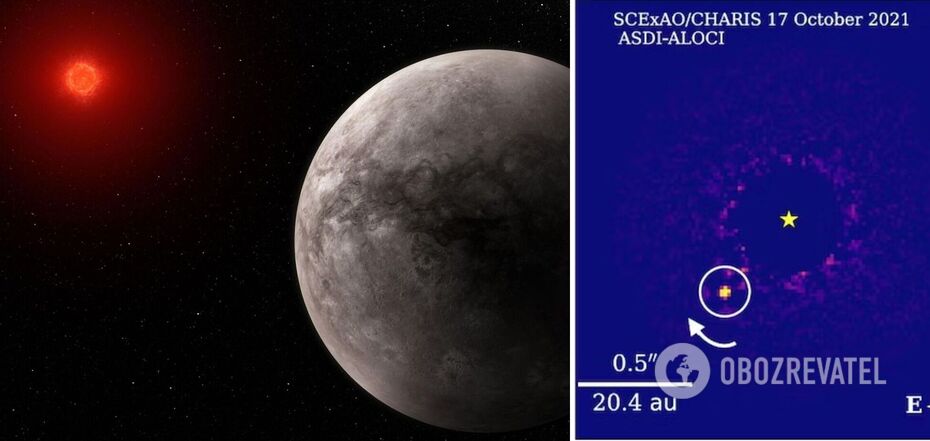Life
Exoplanet 16 times bigger than solar system giant discovered: it may contain water and carbon monoxide
Scientists have discovered a giant exoplanet, HIP 99770 b, which is believed to have water and carbon monoxide. It is located in a star system 125 light years from Earth and has some similarities with our solar system.
The discovery was made by exoplanet hunter, professor of physics and astronomy at the University of Texas at San Antonio (USA), Thayne Currie. The new world was found through a combination of observational search techniques and indirect detection methods.
"I want to find the next Earth, so I'm interested in trying to study planets around other stars as a step towards being able to do that," Currie told Inverse.
The professor explained that his team has managed to detect "20, maybe a few more planets" using observational methods, while other indirect methods have identified about 5,300 exoplanets.
Therefore, Currie believes it is a good idea to combine the two search options.
The recently discovered exoplanet, HIP 99770 b, orbits a massive star. The planet itself is about 14-16 times more massive than Jupiter, which is the largest planet in the Solar System. Currie suggests that the discovered exoplanet may contain water and carbon monoxide in its atmosphere.
According to the professor, the planet receives about as much light from its star as Jupiter receives from our Sun.
The physicist also draws attention to an interesting nuance: if we enlarge our solar system so that our Sun is the same size as the star around which HIP 99770 b circles, both systems will look surprisingly similar. This, according to Currie, only confirms the need to study this system in more detail to better understand our own.
While HIP 99770 b is scientifically interesting in its own right, what is most revolutionary is the way it was discovered. At the heart of the study is the Subaru Coronagraphic Extreme Adaptive Optics instrument, installed on the Subaru Telescope at Mauna Kea, Hawaii. The telescope, operated by the National Astronomical Observatory of Japan, has a mirror nearly 9 metres wide and powerful adaptive optics that help to improve the clarity of images of space distorted by the Earth's atmosphere.
"It uses a sensor to figure out how starlight is blurred by the atmosphere, and then uses a mirror that changes shape 2,000 times a second to adjust the image to account for that atmosphere," the professor said.
According to Currie, the Subaru telescope can better distinguish an exoplanet around a distant star than even the James Webb Space Telescope.
But simply searching for an exoplanet through a telescope in endless space is very difficult, so Currie's team first used indirect methods of detecting exoplanets - known as precision astrometry. This allowed them to find a star system that might contain exoplanets.
Only then was the Subaru telescope used to confirm this discovery and obtain a direct image of the exoplanet.
"If we just look at the stars blindly, just pick stars at random nearby, the chances of us finding a planet like Earth are negligible. But if we know exactly where to look and have some information about when to look, we have a chance of success," the scientist explained.
Earlier, OBOZREVATEL reported that scientists have discovered that one of the discovered exoplanets sends strange radio waves into space. They believe that these signals may indicate the existence of a magnetic field around a distant world.
Subscribe to OBOZREVATEL's Telegram and Viber channels to keep up with the latest news.




























